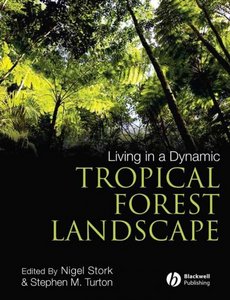Linking cultural and natural diversity of global significance to vibrant economies
Hill, Rosemary (2008) Linking cultural and natural diversity of global significance to vibrant economies. In: Stork, Nigel E., and Turton, Stephen M., (eds.) Living in a Dynamic Tropical Forest Landscape. Blackwell Publishing, Carlton, VIC, Australia, pp. 430-444.
![[img]](https://researchonline.jcu.edu.au/7415/2.hassmallThumbnailVersion/7415_Hill_2008_Cover.jpg)
|
Image (JPEG) (Book Cover)
- Cover Image
Download (66kB) |
|
|
PDF (Published Version)
- Published Version
Restricted to Repository staff only |
Abstract
[Extract] Cultural diversity influences both natural resource management and natural diversity throughout the world. A wide variety of cultural landscapes with high biodiversity values are the joint works of people and nature; examples include traditional coffee production forests in Mexico, highly diverse aynoka potato cultivation in the Andes and coltura mista farming in the Northern Appenines (Farina 1995; Sotomayor 1995; Moguel & Toledo 1999). Many of these systems are now undergoing replacement by industrial monocultures, or abandonment, resulting in rapid biodiversity decline (Michon & de Forestra 1995; Pandey 2003). Tropical rainforests, however, are places where the biophysical influence of Indigenous peoples is more difficult to discern, despite their millennia of occupation. Biodiversity in old fallows of Amazonian tropical forest agricultural systems approaches that of primary forests (Fujisaka et al. 1998). Although Kayapo resource strategies in the Amazon clearly concentrate non-domesticated resources near campsites, the distribution of Brazil nut trees, linked to Indigenous resource strategies, can also be explained by the scatter hoarding of the large rodent, the red-rumped agouti (Dasyprocta agouti) (Posey 1988, 1999; Peres & Baider 1997). Nevertheless, tropical rainforests and their plants and animals are integral to Indigenous rainforest peoples' cultures; for example, yams are of great religious significance to the Baka people of Cameroon (Joiris 1993), while in the West Kalimantan, the, Kantu people's augury is based on omens from several birds, notably the Nenak (white-rumped shama, Copsychus malabaricus) (Dove 1999). Alliances based on recognizing and respecting this deep significance of tropical rainforest to Indigenous peoples through territorial rights are also proving effective for protection of natural diversity (Schwartzman & Zimmerman 2005).
| Item ID: | 7415 |
|---|---|
| Item Type: | Book Chapter (Research - B1) |
| ISBN: | 978-1-4051-5643-1 |
| Date Deposited: | 18 Jan 2010 00:20 |
| FoR Codes: | 05 ENVIRONMENTAL SCIENCES > 0599 Other Environmental Sciences > 059999 Environmental Sciences not elsewhere classified @ 100% |
| SEO Codes: | 96 ENVIRONMENT > 9606 Environmental and Natural Resource Evaluation > 960609 Sustainability Indicators @ 100% |
| Downloads: |
Total: 1191 Last 12 Months: 4 |
| More Statistics |




